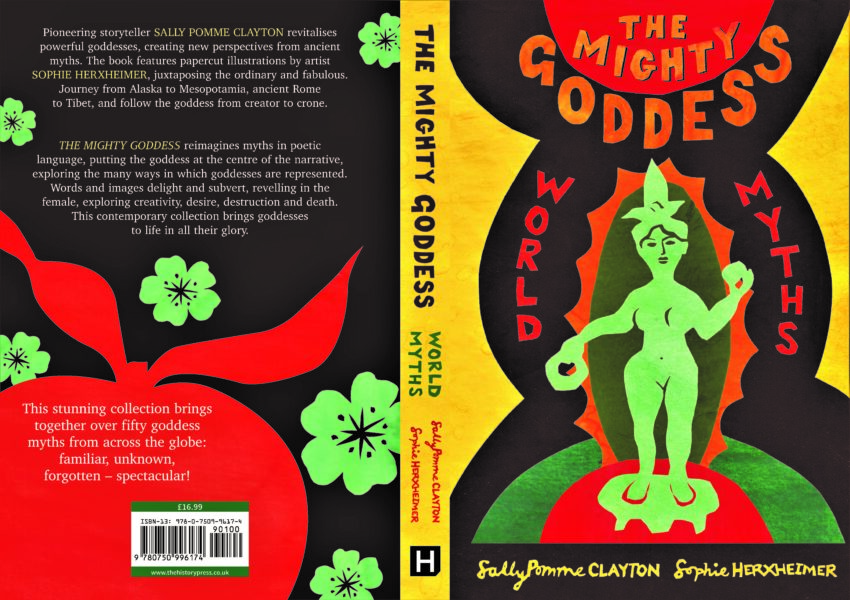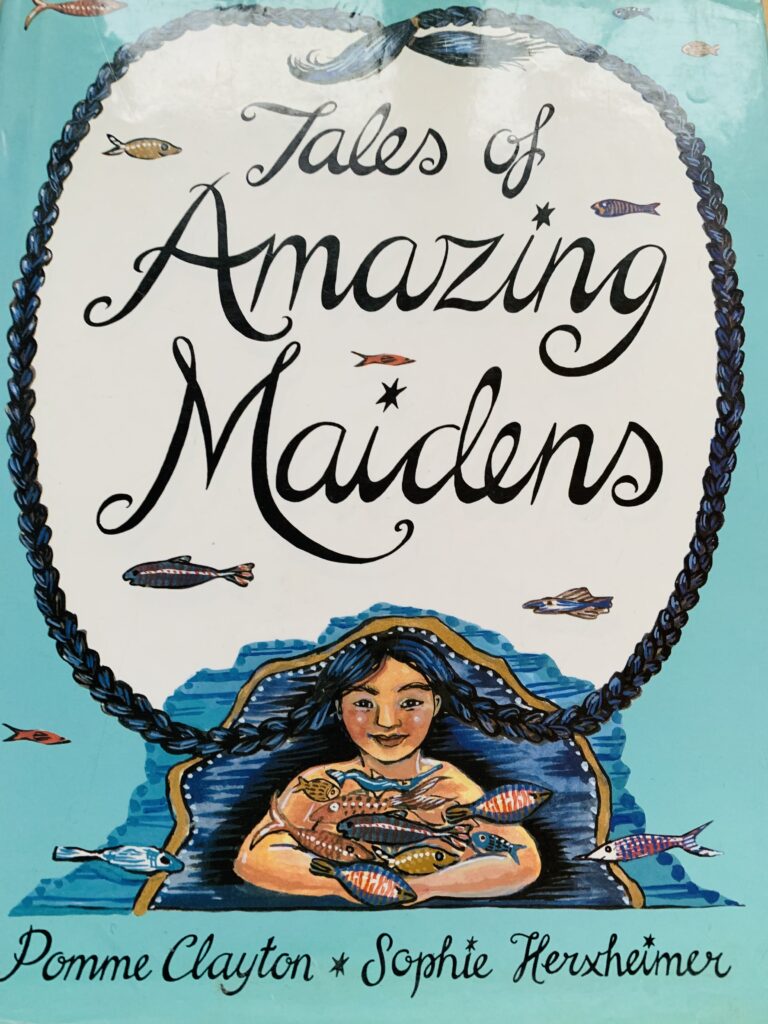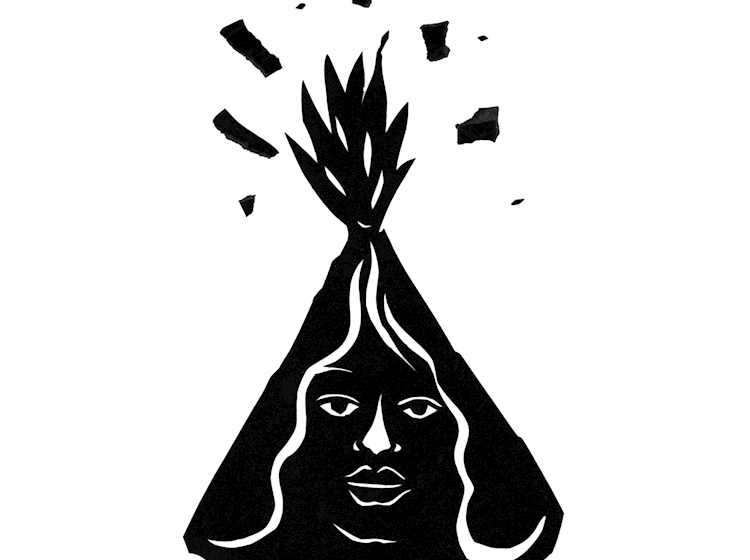Making the Mighty Goddess

The Mighty Goddess is a collection of 52 goddess myths from around the world written by me, Sally Pomme Clayton, with 52 papercuts created by artist and poet Sophie Herxheimer. My 40 year career as a writer and storyteller has focused on female protagonists and goddesses. And over that time Sophie and I have collaborated on creating several children’s books together. The first book we made was Tales of Amazing Maidens (Orchard Books 1995). We loved this book, it was unique and there really was nothing else like it at the time. It mixed stories of bold heroines with powerful goddesses. It was funny and moving. But the book did not get much attention or the publicity it deserved, and sadly it disappeared.

Our love for those fairytales, myths and female characters did not vanish. They lived on through the many live performances I created, through Sophie’s paintings and poems, and through several other books we made together. But now, after many years we have created our first book for adults and returned to the subject we both love so much. Along with 50 other goddess myths, The Mighty Goddess revisits two of the myths from Tales of Amazing Maidens – the myths of Alaskan goddess Sedna and Japanese goddess Amaterasu. But this latest collection is for adults, and the stories and images have not been censored or tamed. In this collection we have been freed to respond to all aspects of the goddess myths: lust and greed; rape and rage; death and destruction; jealousy and murder; desire and love; transformation and rebirth. In those two myths in particular, Sedna violently looses her fingers and thumbs so that they can become all the sea creatures. And Amaterasu is tricked by laughter, created as a dancer reveals her vulva!

In The Mighty Goddess myth and art combine. Poetic language conjures each goddess and narrative, while giving space to Sophie’s paper cuts. Her playful images juxtapose the ordinary and the fabulous. The paper cuts truly are illustrations for adults. They are like icons that punctuate the drama of the myths, giving space in turn to the reader – a moment to pause, to dream, to think. I have taken my own journey through the myths and have placed the goddess at the centre of each story, not at the side or lost at the end where she often can be. I sometimes chose to leave out male characters or reduce their roles significantly – there are plenty of collections where you can find their stories! I tried to find, inhabit and give voice to each goddess. By telling the myths from the point of view of the goddess I discovered new emotions, meanings and metaphoric realities. Courage, power, determination and rage are emotions that repeatedly appeared in the goddess myths. I think the goddess’s rage is often ignored, but I found it to be a motivating force! Rage powers: Demeter’s search for her daughter; volcano Goddess Pele’s flowing lava; Freyja’s band of Valkyries; Diana’s desire to protect her female companions; Ereshkigal’s loneliness, and Lilith’s righteous fury.

The goddess appears in multiple forms and narratives across the world and there are countless goddess myths, this collection is my selection from that vast source. I chose to define the goddess as a supreme deity who is or was worshipped, who appears as female, both male and female, or transcends gender. Writing the book over three years many of the same archetypal images kept recurring. Some of the images, characters and narrative events are impossibly strange, funny and surreal. And I found it thrilling that constant mythic sparks flashed between distant geographies and continents, languages and cultures. Goddesses Amaterasu, Wuriunpranilli and Saule appear as the sun, travelling across the sky to bring us light, descending into the underworld at the end of the day. The very body of goddesses Cybele, Pachamama, Pele, Asase Yaa and Tiamat become the earth itself. Goddesses Anahita, Ilmater, Oshun and Saraswati are linked to rain and water. While goddesses of death, Cihuacóatl, Hine-nui-te-pō and Asase Yaa draw humans back inside their womb at the end of life, the birth canal becoming a tomb, where you can be reborn.

Storytellers have always made and remade myths anew for each contemporary audience. Myths are always in the process of becoming. But in this collection I have attempted to balance my own exploration and discovery with respect for the narratives we have inherited from our ancestors. These myths link us to our past, to the dreams and terrors, wisdom and hope of those who came before us. I want to keep their unfathomable visions alive. The Mighty Goddess is both a legacy to a life of living with, loving and performing these myths, and to the immeasurable value of those who kept the myths alive for thousands of years. I hope the book allows the mysterious images and narratives to reverberate with each other, revealing our shared cultural roots and deep collective preoccupations. And that our words and images give space for other worlds and possibilities, and your own dreams, to come into existence.


Leave a Reply